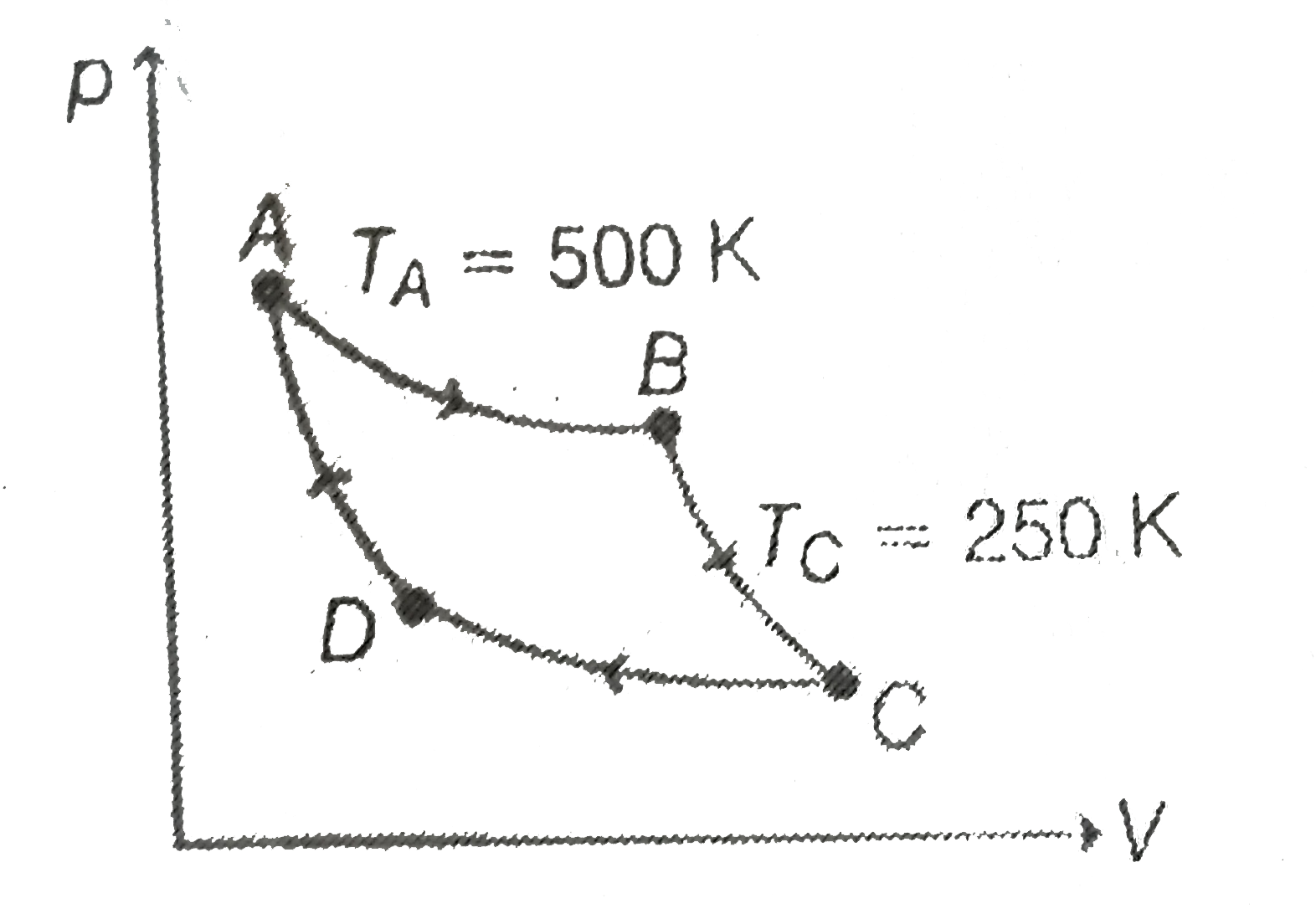A carnot cycle consists of
Two stages
Four stages
Six stages
Eight stages.
The correct Answer is:B
To solve the question regarding what a Carnot cycle consists of, we can break it down into the four distinct processes that occur in the cycle. Here’s a step-by-step solution:
Step 1: Understand the Carnot Cycle
The Carnot cycle is a theoretical thermodynamic cycle that provides the maximum possible efficiency for a heat engine operating between two temperature reservoirs. It consists of four distinct processes.
Step 2: Identify the Four Processes
The Carnot cycle consists of the following four processes:
1. Isothermal Expansion (Process A to B): The working substance (usually a gas) absorbs heat QH from a hot reservoir at a constant temperature TH. During this process, the gas expands and does work on the surroundings.
2. Adiabatic Expansion (Process B to C): The gas continues to expand without exchanging heat with the surroundings (adiabatically). The temperature of the gas decreases from TH to TC during this process.
3. Isothermal Compression (Process C to D): The gas is now in contact with a cold reservoir at a constant temperature TC. It releases heat QC to the cold reservoir while being compressed, which means work is done on the gas.
4. Adiabatic Compression (Process D to A): The gas is compressed further without heat exchange, causing its temperature to rise from TC back to TH.
Step 3: Summarize the Carnot Cycle
To summarize, the Carnot cycle consists of:
- Isothermal Expansion
- Adiabatic Expansion
- Isothermal Compression
- Adiabatic Compression
Conclusion
Thus, the Carnot cycle consists of these four processes, and any statement claiming otherwise would be incorrect.
---
The Carnot cycle is a theoretical thermodynamic cycle that provides the maximum possible efficiency for a heat engine operating between two temperature reservoirs. It consists of four distinct processes.
The Carnot cycle consists of the following four processes:
1. Isothermal Expansion (Process A to B): The working substance (usually a gas) absorbs heat QH from a hot reservoir at a constant temperature TH. During this process, the gas expands and does work on the surroundings.
2. Adiabatic Expansion (Process B to C): The gas continues to expand without exchanging heat with the surroundings (adiabatically). The temperature of the gas decreases from TH to TC during this process.
To summarize, the Carnot cycle consists of:
- Isothermal Expansion
- Adiabatic Expansion
- Isothermal Compression
- Adiabatic Compression
Thus, the Carnot cycle consists of these four processes, and any statement claiming otherwise would be incorrect.
Topper's Solved these Questions
- THERMODYNAMICSBOOK - AAKASH INSTITUTE ENGLISHCHAPTER - THERMODYNAMICSEXERCISE - ASSIGNMENT (SECTION -A) (Objective Type Questions)
47 Videos
- THERMODYNAMICSBOOK - AAKASH INSTITUTE ENGLISHCHAPTER - THERMODYNAMICSEXERCISE - ASSIGNMENT (SECTION -B) (Objective Type Questions)
30 Videos
- THERMODYNAMICSBOOK - AAKASH INSTITUTE ENGLISHCHAPTER - THERMODYNAMICSEXERCISE - TRY YOURSELF
12 Videos
- THERMAL PROPERTIES OF MATTERBOOK - AAKASH INSTITUTE ENGLISHCHAPTER - THERMAL PROPERTIES OF MATTEREXERCISE - Assignment (Section-J) Akash Challengers Questions
7 Videos
- UNITS AND MEASUREMENTSBOOK - AAKASH INSTITUTE ENGLISHCHAPTER - UNITS AND MEASUREMENTSEXERCISE - ASSIGNMENT (SECTION - D)
15 Videos
Similar Questions
Knowledge Check
Consider a carnot cycle operating between source tempeature 750 K and sink temperature 350 K producing 1.25 J KJ of mechanical work per cycle, the heat transferred to the engine by the reservers
A1.34 KJB2.34 KJC3.34 KJD4.34 KJ
The temperature of food material in refrigerator is 4∘C and temperature of environment is 15∘C. If carnot cycle is used in its working gas, then find its carnot efficiency.
View SolutionA monoatomic ideal is used as the working substance for the carnot cycle shown in the figure. Processes AB and CD are isothermal, while processes BC and DA are adiabatic. During process AB, 400 J of work is done by the gasd on the surroundings. How much heat is expelled by the gas during process CD?

View SolutionDraw a Carnot cycle and on the diagram mark the work done by the engine.
View SolutionFigure. Shows the P−V diagram for a Carnot cycle. In this diagram

View SolutionAssertion : The Carnot cycle is useful in understanding the performance of heat engines.
Reason : The Carnot cycle provides a way of deteriming the maximum possible efficiency achievable with reservoirs of given temperatures.
View SolutionCarnot's cycle is said to have 25% efficiency when it operates between T (source) and 300K (sink). Temperature T is
View SolutionA monoatomic gas undergoes a cycle consisting of two isothermals and two isobarics. The minimum and maximum temperatures of gas during the cycle are T1=400K and T2=800K, respectively, and the ratio of maximum to minimum volume is 4.

The efficiency of the cycle is
View Solution
